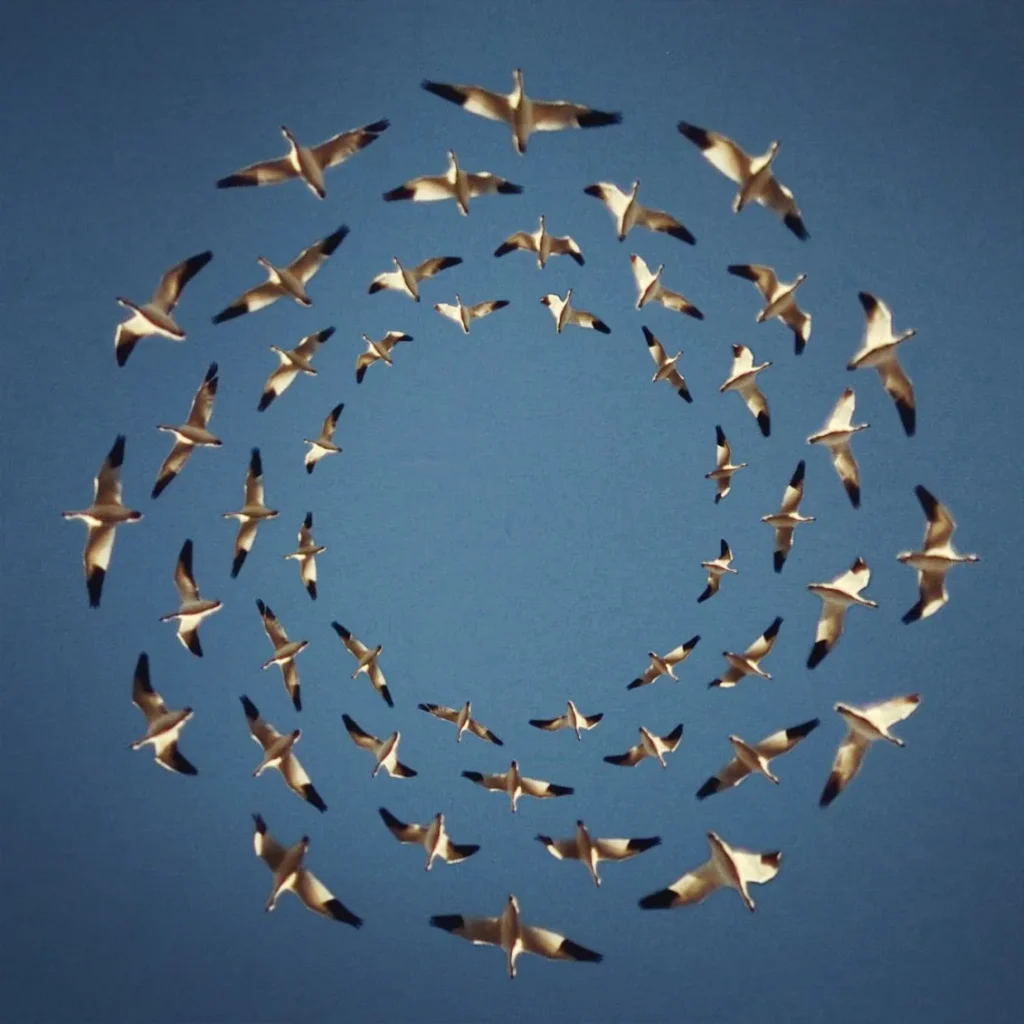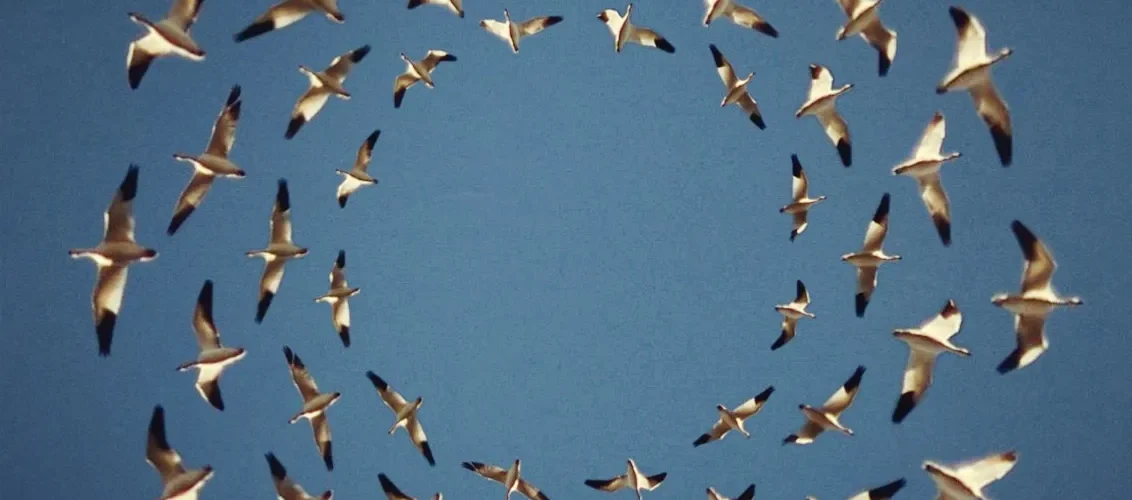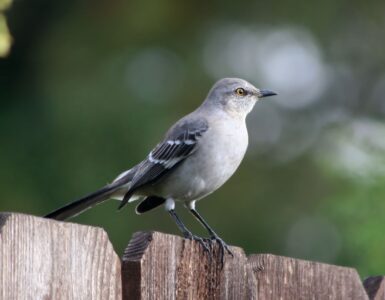Why Do Birds Fly in Circles?
The spectacle of birds flying in circles has fascinated observers for centuries, prompting questions about the reasons behind this behavior. From natural instincts and aerodynamics to protective mechanisms and spiritual significance, there are multiple layers to understand why birds engage in circular flight patterns. This article delves into the scientific explanations as well as the cultural and personal interpretations of this avian phenomenon.

Key Takeaways
- Birds fly in circles to utilize thermal air currents for energy-efficient soaring, to confuse predators, and to gather before migration.
- Circular flight patterns are part of a bird’s natural instinct for survival, including seeking food, orientation, and maintaining body heat.
- Flocking behavior, including flying in circles, offers safety in numbers and allows for better communication and coordination among birds.
- Beyond the practical reasons, circular flight holds symbolic and spiritual meanings, often associated with freedom, peace, and destiny.
- Expert insights highlight the importance of thermals for birds of prey and the implications for conservation efforts.
Understanding the Natural Instincts Behind Circular Flight Patterns

Seeking Thermal Air Currents
Birds have evolved to master the skies, and one of their most fascinating behaviors is their ability to glide effortlessly in circles. Thermal currents are the invisible elevators of the sky, masses of hot air that rise from the sun-warmed ground. By circling within these thermals, birds can gain significant altitude without the need for constant flapping, conserving their energy for long flights.
Birds of prey and large avian species, in particular, rely on thermals to support their substantial wingspans, allowing them to soar while expending minimal energy.
Migratory flocks especially utilize these rising columns of air to traverse vast distances. By flying in circles, they can locate and ride these thermals, effectively using the natural phenomenon as a strategic pit stop in their arduous journey. The process is not just about altitude; it’s a complex interplay of physics and instinct that enables birds to navigate the aerial highways with precision.
- Locating thermals: Birds circle to find rising warm air.
- Conserving energy: Gliding in thermals reduces the need for flapping.
- Predator evasion: Circling can confuse potential predators.
- Migratory aid: Thermals assist in covering long distances.
Group Dynamics and Predator Evasion
Birds flying in circles as a group is not just a mesmerizing sight; it’s a sophisticated survival strategy. By moving together in a circular pattern, birds create a visual illusion that confuses predators, making it difficult for them to target a single bird. This collective behavior is especially beneficial for smaller birds, which are more vulnerable when isolated.
The dynamics of flocking behavior are complex and serve multiple purposes. Here are some key reasons why birds engage in this practice:
- To disorient predators and reduce the risk of being singled out.
- To maintain visual contact with the flock, ensuring no bird is left behind.
- To utilize the ‘many eyes’ effect, where multiple birds can watch for danger more effectively than one.
In the midst of a predator attack, the chaos of a swirling mass of birds can be the difference between life and death. The unpredictability of the flock’s movement pattern adds an extra layer of protection.
Understanding these group dynamics is crucial for conservation efforts, as it highlights the importance of preserving the natural behaviors that keep bird populations thriving.
Pre-Flight Gathering for Migratory Birds
As migratory birds prepare for their long journeys, they often engage in pre-flight gatherings that serve multiple purposes. These gatherings are not just social; they are a critical part of the birds’ survival strategy. Birds of the same species congregate, sometimes in vast numbers, to synchronize their departure and ensure that no bird is left behind.
The pre-flight gathering is a spectacle of nature, a strategic move that optimizes the chances of a successful migration.
The behavior of forming circles in the sky can be seen as a way to attract other birds to join the group, increasing the size of the flock for the migration. This tactic not only helps in predator evasion but also in navigation, as a larger flock is more likely to include experienced individuals who know the migratory route.
Additionally, these gatherings allow birds to conserve body heat and energy before embarking on their arduous trip. The act of flying in circles is not aimless; it is a deliberate preparatory step that can be influenced by various factors such as weather conditions and wind patterns.
Body Heat Conservation Strategies
In the cooler climates or during seasonal transitions, birds often fly in circles as a strategy to conserve body heat. This behavior is particularly noticeable in species that are not insulated enough to retain warmth when stationary. By flying in a cohesive group, birds take advantage of the collective warmth and reduced wind chill effect.
- Thermal regulation: Birds maintain their body temperature by flapping wings and increasing metabolic rate.
- Draft reduction: Flying in close formation reduces air resistance and helps conserve energy.
- Heat sharing: The proximity of birds in flight allows for shared body heat, which is critical in cold conditions.
The circular flight pattern is not just a whimsical trait but a calculated survival tactic, deeply ingrained in the avian instinct. It serves multiple purposes, from increasing their chances of finding food to aiding in navigation during migration.
The Science of Avian Aerodynamics

Energy Efficiency in Flight
Birds have evolved to master the skies with remarkable energy efficiency. Their ability to minimize energy expenditure during flight is a testament to their evolutionary adaptations. One of the most striking examples of this efficiency is observed in the flight patterns of frigatebirds. These birds, with their large wing-area-to-body-weight ratio, can soar for hours, even months, without frequent wing flapping, exploiting air currents to stay aloft with minimal effort.
Flocks of migratory birds also demonstrate this efficiency by utilizing thermal air currents. They fly in circles to locate these thermals, which then allow them to glide long distances without the need for constant wing movement. This behavior not only conserves energy but also enables them to cover vast distances during migration.
The strategic use of thermals and air currents is a critical component of avian energy conservation, allowing birds to travel great distances and maintain flight with little to no wing flapping.
Predatory birds, too, benefit from these thermals, as their large wings require significant energy to flap. By circling until they find a rising column of warm air, they can maintain altitude with less effort, conserving energy for hunting and other activities.
The Role of Thermals in Sustained Soaring
Thermal currents are essential for birds, particularly when it comes to sustained soaring. These masses of hot air rise from the ground, heated by the Sun, and provide a natural elevator in the sky. Birds use these thermals to gain altitude with minimal effort, allowing them to glide for hours and conserve energy. This is especially beneficial for migratory birds covering long distances and large predatory birds that require significant energy to flap their wings.
- Migratory birds circle to locate thermals for energy-efficient travel.
- Predatory birds use thermals to maintain flight with less wing flapping.
Birds riding on thermals can appear almost motionless as they search for or observe prey from great heights.
Understanding the utilization of thermals is not just for ornithologists. For example, paragliders mimic these avian strategies to soar in competitive races, known as gaggles, using only the power of these warm air columns.
Birds of Prey and Their Specialized Flight Techniques
Birds of prey exhibit some of the most sophisticated flight techniques in the avian world. Their ability to utilize thermals and updrafts allows them to soar with minimal energy expenditure, a crucial adaptation for these hunters. For instance, frigatebirds, with their large wing-area-to-body-weight ratio, are known for their exceptional soaring capabilities, often staying aloft for extended periods without flapping their wings.
Birds of prey have evolved to master the skies, using their flight techniques not just for hunting, but also for efficient long-distance travel.
Here are some key flight techniques observed in birds of prey:
- Thermal soaring: Using rising warm air currents to gain altitude without the need for flapping wings.
- Dynamic soaring: Exploiting wind gradients above ocean waves, as seen in albatrosses.
- Slope soaring: Gliding on updrafts created by wind hitting the face of cliffs or hillsides.
These techniques are not just about conservation of energy; they also play a role in the birds’ survival strategies. By soaring, they can scan vast areas for prey and avoid potential threats from the ground. The study of these flight patterns not only fascinates ornithologists but also informs aircraft design and conservation efforts.
The Protective Mechanisms of Flocking Behavior

Confusing Predators Through Collective Movement
Birds flying in circles as a group is a strategic maneuver to confuse predators. This collective movement makes it difficult for predators to target a single bird, increasing the chances of survival for each individual in the flock. Predatory birds often find it less risky to go after solitary prey rather than confronting a large, swirling mass of potential targets.
The disorientation of predators is a critical survival tactic for smaller birds. By moving unpredictably as a group, they create a visual challenge that deters attacks.
The effectiveness of this strategy can be seen in the behavior of various bird species. For instance, starlings perform complex aerial displays called murmurations, where thousands of birds move in sync, creating mesmerizing patterns that bewilder predators.
- Starlings: Perform murmurations to confuse predators
- Small birds: Fly in circles to disorient hunters
- Predatory birds: Prefer solitary prey over attacking flocks
Safety in Numbers: The Advantages of Flocking
The phenomenon of birds flying in circles is not just a mesmerizing sight; it’s a strategic survival tactic. The more birds there are, the safer the trip will be, as a collective presence significantly reduces the risk of predation. Predators find it challenging to target a single bird within a swirling mass, leading to confusion and hesitation.
In addition to safety from predators, flocking provides practical benefits. Birds in a group have more eyes to search for food, enhancing foraging success. Moreover, the close proximity of birds in flight aids in maintaining body heat, crucial during colder seasons or high-altitude migrations.
Flocking behavior is a testament to the intelligence and adaptability of birds, showcasing their innate ability to collaborate for mutual benefit.
While the primary goal is often safety, the act of flying in circles serves multiple purposes, from attracting other birds to join before a migratory journey to simply sharing the warmth among the group.
Communication and Coordination Among Flock Members
Birds possess a remarkable ability to communicate with one another, and this communication is essential for the cohesion and coordination of a flock. The intricate dance of a flock in flight is not just a visual spectacle but a complex conversation, with each bird playing a role in the collective movement.
- Birds use visual signals to align their movements.
- Vocalizations serve as alerts and coordination cues.
- Position changes within the flock can signal directional shifts or threats.
The synchronized patterns of flight seen in flocks are a testament to the birds’ ability to process and respond to multiple signals simultaneously.
Understanding these communication mechanisms is crucial for appreciating the sophisticated nature of flock dynamics. It’s not merely about following the leader; it’s about a network of constant feedback and adjustment that allows the flock to move as one unified entity.
The Symbolic and Spiritual Significance of Birds Flying in Circles

Cultural Interpretations of Circular Flight
Throughout history, birds flying in circles have captivated human imagination, often being imbued with profound symbolic and spiritual meanings. Birds are universally seen as symbols of freedom and peace, representing an unbound spirit and the aspiration for a harmonious existence.
In various cultures, circular flight patterns are interpreted as messages from the divine or as omens signifying future events. This behavior is seen as a dance between the earthly and the celestial, where birds act as messengers or guides.
- In Native American traditions, birds are revered as totems and their circular flight is sometimes viewed as a sign of protection or guidance.
- For many Asian cultures, birds flying overhead in circles can symbolize the continuous cycle of life and rebirth.
- In European folklore, such patterns are often considered portents, with different species of birds carrying specific prophetic meanings.
The elegance of birds in flight, especially when they soar in circles, has always been a source of inspiration and wonder, transcending the mere mechanics of avian behavior to touch the spiritual realm.
Birds as Symbols of Freedom and Peace
Throughout history, birds have been revered as emblems of liberty and serenity. Their ability to ascend into the skies has been a source of inspiration, symbolizing the aspiration to rise above earthly concerns and achieve a state of peace. Birds flying in circles often evoke a sense of harmony and balance, reflecting the eternal cycle of life and the interconnectedness of all things.
In many cultures, the sight of birds circling overhead is considered a sign of good fortune and a harbinger of positive change. These creatures, unbound by terrestrial limits, represent the human desire for freedom and the pursuit of higher ideals. The bird spirit animal is particularly associated with the expression of one’s true voice and the power to uplift and inspire.
The circular flight of birds captures the essence of spiritual ascension and the quest for enlightenment. It is a visual metaphor for the soul’s journey towards understanding and the peace that comes with spiritual awareness.
The spiritual significance of birds is deeply ingrained in human consciousness, often serving as a bridge between the earthly realm and the divine. Their flight patterns, especially the mesmerizing dance of circling, continue to captivate and intrigue, offering a glimpse into the profound mysteries of life.
Personal Anecdotes and Beliefs
Throughout history, the sight of birds flying in circles has captivated the human imagination, often being interwoven with personal beliefs and spiritual narratives. The bird’s ability to take flight serves as a reminder of the importance of letting go and embracing the freedom that comes with shedding the burdens that weigh us down. This symbolism is deeply rooted in various cultures and individual perceptions.
Many people report a sense of peace and introspection when observing these natural aviators. The circular motion, with no clear beginning or end, can represent the cycles of life and the continuity of existence. It’s a visual metaphor that resonates on a personal level, often leading to reflections on one’s own journey through life.
The circular flight of birds can be a profound personal experience, evoking emotions and thoughts that transcend the mere act of observation.
While the scientific community continues to explore the practical reasons behind these flight patterns, the personal and spiritual connections people make with them remain a testament to the enduring bond between humans and the natural world.
Expert Insights on Avian Flight Patterns

Interview with Wildlife Ecologist Jennifer Phillips
In an enlightening discussion with Wildlife Ecologist Jennifer Phillips, we delved into the intricacies of avian flight patterns. Jennifer emphasized the complex interplay between environmental factors and bird behavior. Birds, she explained, are not just passive participants in their environment but active navigators, seeking out optimal conditions for flight.
Birds have evolved to exploit the air currents and thermals with remarkable precision, which is essential for their survival and migration.
Jennifer highlighted the importance of understanding these patterns for conservation efforts. She pointed out that changes in land use and climate can disrupt these natural flight corridors, making it more difficult for birds to find their way.
- The role of predators in shaping flight behavior
- The impact of human activity on flight paths
- Strategies birds use to conserve energy during flight
These insights from Jennifer Phillips provide a deeper appreciation for the complexity of bird migration and the challenges they face in a changing world.
How Birds Use Thermals to Their Advantage
Birds have developed a remarkable strategy to conserve energy during flight by utilizing thermal air currents. Thermals are masses of hot air that rise from the ground, providing a natural elevator that birds can ride to gain altitude without the need for constant flapping. This technique is especially beneficial for migratory birds and birds of prey, which require significant energy to cover long distances or maintain flight while hunting.
By circling within these thermals, birds can ascend higher and glide for extended periods, effectively reducing their energy expenditure. This not only aids in long-distance travel but also allows predatory birds to remain almost motionless in the air, conserving energy while they scan for prey.
The use of thermals is a testament to the birds’ ability to adapt to their environment and optimize their flight patterns. Below is a list of key advantages birds gain from thermal soaring:
- Energy conservation: Reduced need for flapping saves vital energy.
- Increased altitude: Ability to reach higher altitudes for broader visibility and easier migration.
- Predator evasion: Higher vantage points make it harder for predators to attack.
- Efficient hunting: Birds of prey can observe and track prey with minimal movement.
Implications for Bird Conservation Efforts
Understanding the flight patterns of birds, particularly their tendency to fly in circles, has significant implications for conservation efforts. The circular flight patterns can indicate critical areas for conservation, such as locations where birds find thermal currents necessary for migration. Conservationists can use this knowledge to prioritize areas for protection and to mitigate risks such as habitat destruction and collisions with man-made structures.
- Identification of key migratory routes and resting spots
- Development of bird-safe building designs
- Implementation of policies to protect critical habitats
The insights gained from studying avian flight patterns are invaluable in shaping conservation strategies that ensure the survival of bird populations in an ever-changing environment.
Conclusion
In summary, the intricate dance of birds flying in circles is a multifaceted behavior with both practical and symbolic implications. From utilizing thermal updrafts to conserve energy during long migrations to forming protective flocks that confuse predators, birds have evolved this strategy for survival and efficiency. Additionally, the sight of birds circling has captivated human imagination, imbuing it with spiritual meanings of freedom and destiny. Whether observed for their natural grace or pondered for their deeper significance, these avian patterns in the sky continue to intrigue and inspire us.
Frequently Asked Questions
What is the natural reason why birds fly in circles?
Birds fly in circles for various natural reasons, such as seeking thermal air currents, confusing predators, orientation, signaling to other birds of their species, or maintaining body heat.
How do birds use thermal air currents to their advantage?
Birds, especially migratory and predatory species, use thermal air currents for energy-efficient soaring. They circle until they find a thermal to ride, which conserves energy during long flights.
Why do birds circle when they find food instead of going straight to it?
Birds of prey often circle while searching for food to gain a better vantage point and to ride the thermal updrafts, which conserves energy as they scout for a meal.
What are the benefits of birds flying in flocks?
Flying in flocks provides birds with numerous benefits, including protection from predators through disorientation, safety in numbers, better foraging efficiency, and conservation of body heat.
What does it mean when you see a flock of birds flying in circles?
Seeing a flock of birds flying in circles can have multiple interpretations, ranging from natural behaviors like seeking thermals or evading predators, to symbolic meanings such as being a sign of destiny or change.
What is the symbolic and spiritual significance of birds flying in circles?
Culturally, birds flying in circles are often associated with freedom and peace. Spiritually, they can represent a message or an omen, suggesting that one is the master of their own destiny.














